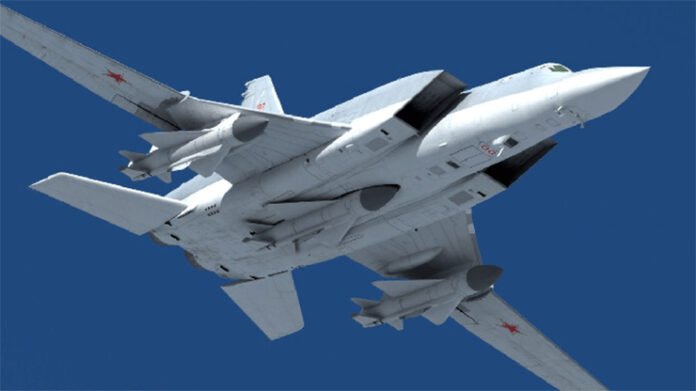New Delhi: The potential acquisition of Russia’s Tu-160M nuclear bomber by India could significantly enhance the Indian Air Force’s (IAF) striking capabilities, particularly in terms of long-range and strategic deterrence.
The Tupolev Tu-160M, also known as the “White Swan,” is a modernised version of the original Tu-160 strategic bomber. It features advanced avionics, navigation systems, and weaponry, making it approximately 60% more effective than its predecessor.
The aircraft has a range of 12,000 km (7,500 miles) without refuelling with a speed of upto 2,220 km/h and having a payload capable of carrying up to 12 long-range cruise missiles or short-range nuclear missiles with a four-member crew.
This aircraft is designed for both nuclear and conventional missions, providing a versatile platform for deep-strike operations across the Indo-Pacific region and beyond.
The airplane has strategic implications for India. The Tu-160M’s ability to carry nuclear-capable missiles would bolster India’s nuclear triad, which currently includes land-based and submarine-launched systems. This addition would provide a robust aerial leg to India’s existing deterrent capabilities.
With a range that allows operations well beyond India’s immediate borders, the Tu-160M would enable the IAF to target adversaries at significant distances without requiring mid-air refuelling. This capability reduces vulnerability during long missions and enhances operational flexibility.
The bomber’s design allows it to conduct missions independently of support aircraft, which is crucial for operations in contested environments where refuelling might not be feasible.
The Tu-160M is still in production, with Russia planning to deliver additional units by 2027. This ongoing development means that India could acquire an aircraft that benefits from the latest technological advancements in military aviation.
While the acquisition of the Tu-160M presents numerous advantages, several challenges have to be met which includes an estimated cost of around $163 million, and maintaining a fleet of heavy bombers would require substantial investment in infrastructure and logistics. This includes modifications to airbases and specialised training for pilots and crew.
The IAF has traditionally emphasised multirole fighters over dedicated bombers. Integrating the Tu-160M into its operational doctrine will require careful evaluation of how this aligns with current strategic objectives and force structure.
Operating heavy bombers necessitates robust logistical support systems, including maintenance facilities and supply chains capable of supporting complex aircraft operations.
The Tu-160M could serve as a transformative asset for India’s defence strategy, enhancing its long-range strike capabilities and strategic deterrence while presenting logistical and operational challenges that need careful consideration.
Raksha Anirveda's editorial desk team brings in the collective experience of creative professionals - a fine mix of senior copy editors, writers, proofreaders and designers. Working as a team, they continuously create, manage, and curate content to sustain the magazine's profile and reputation in line with market trends and achieve magazine's goal.





